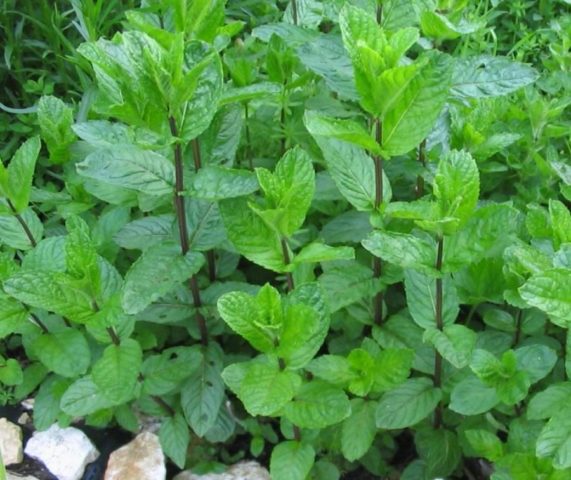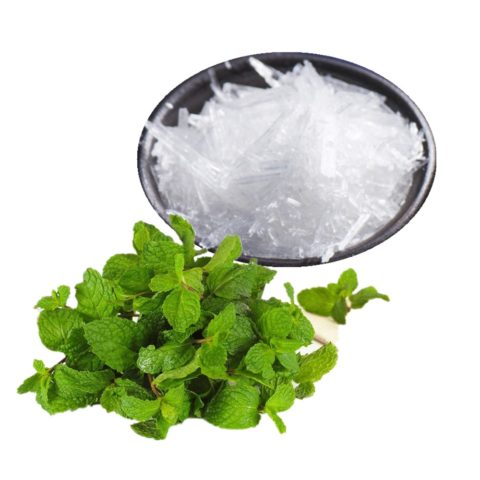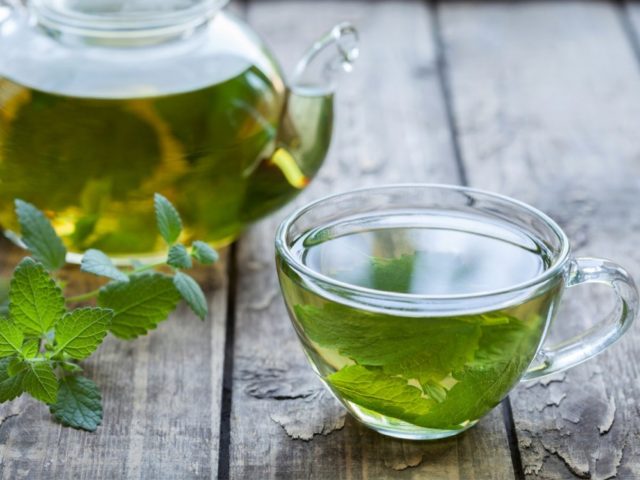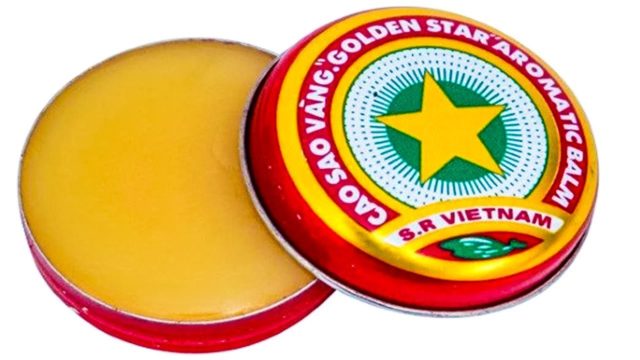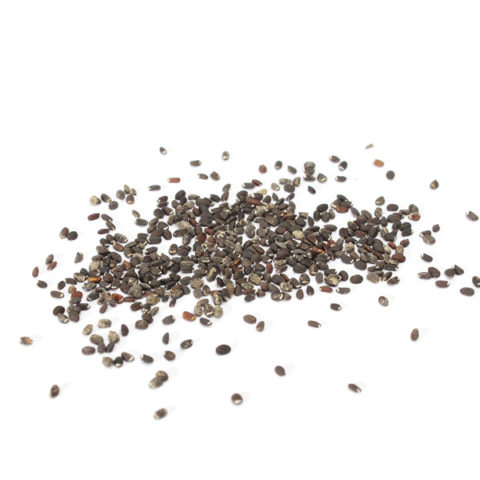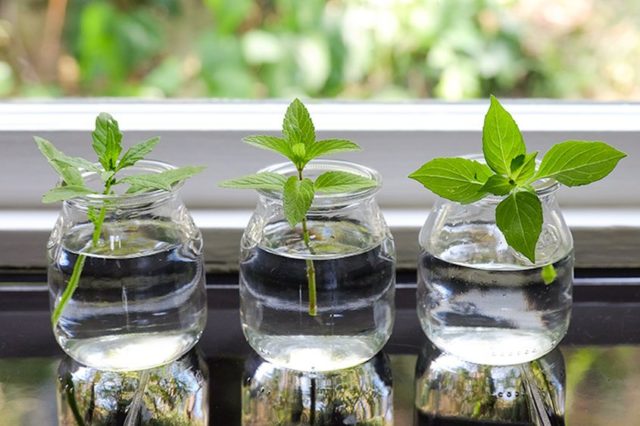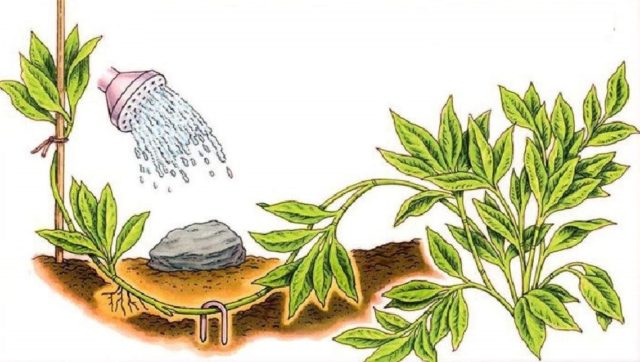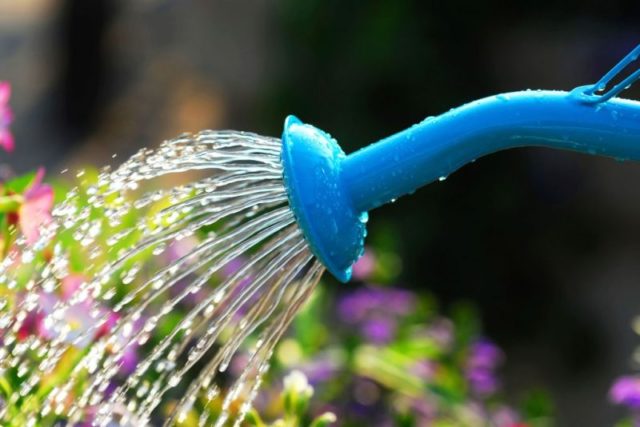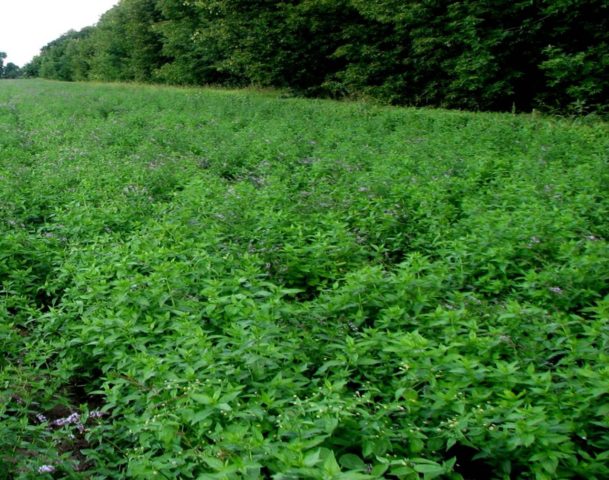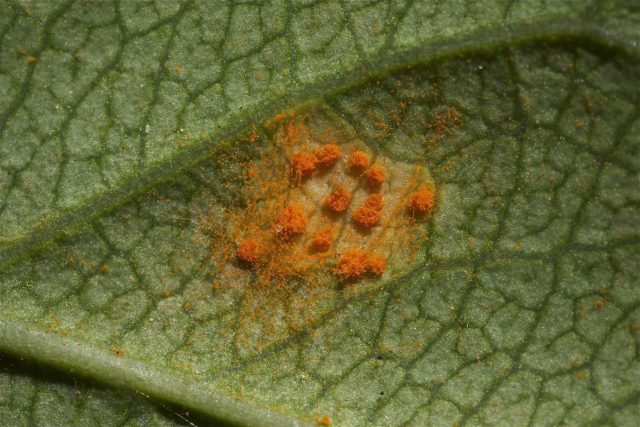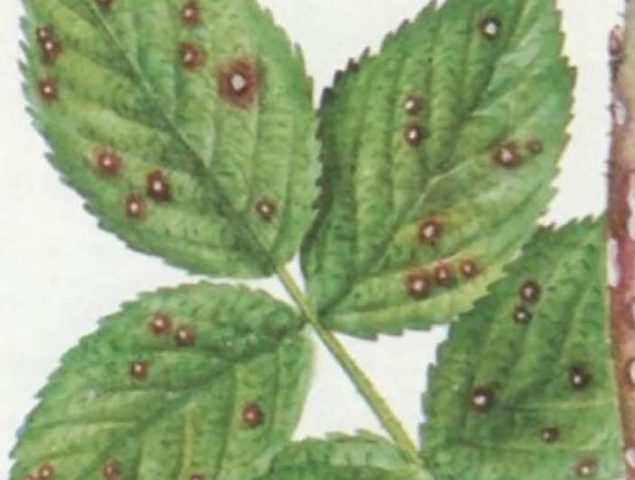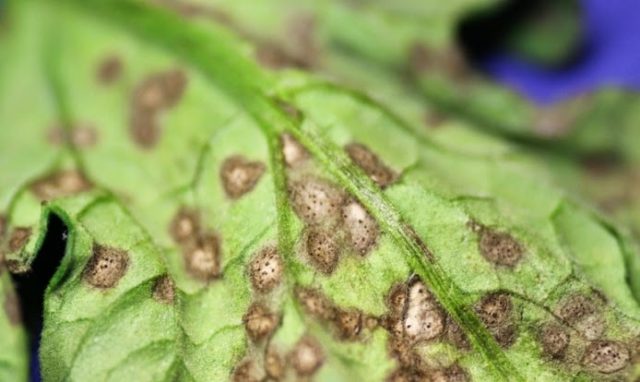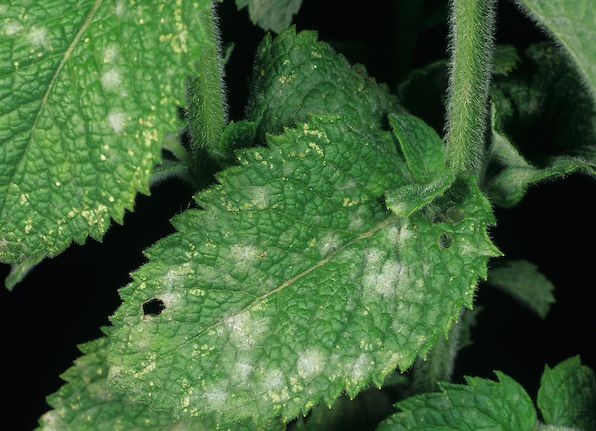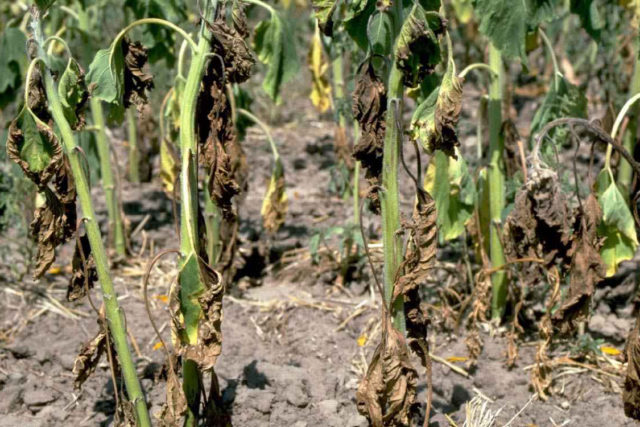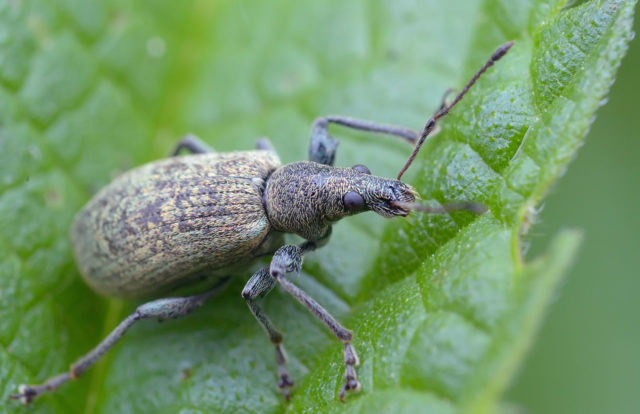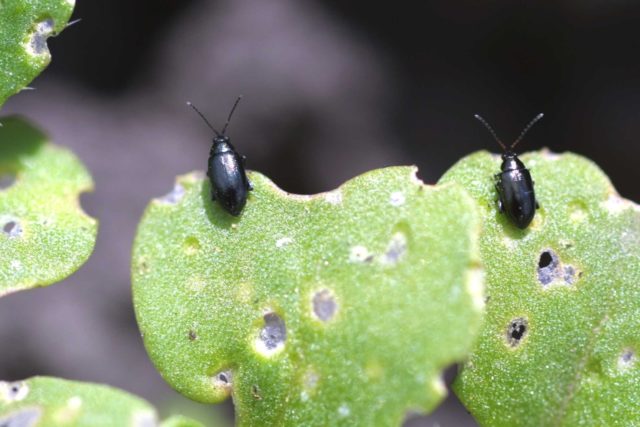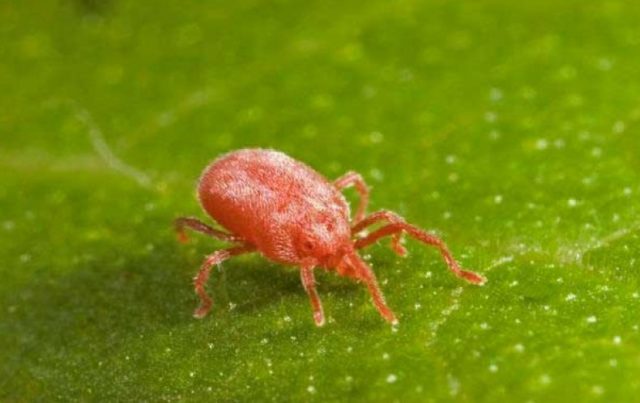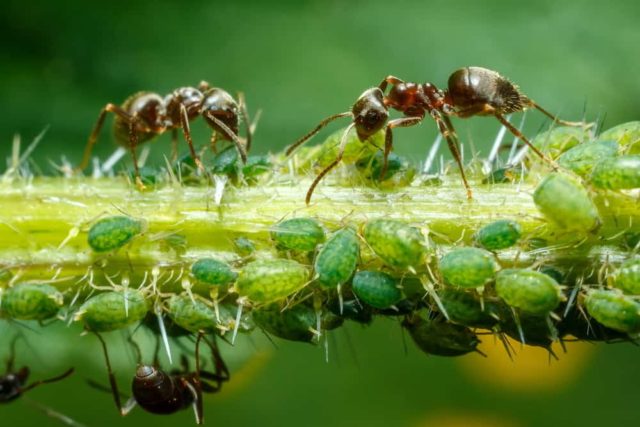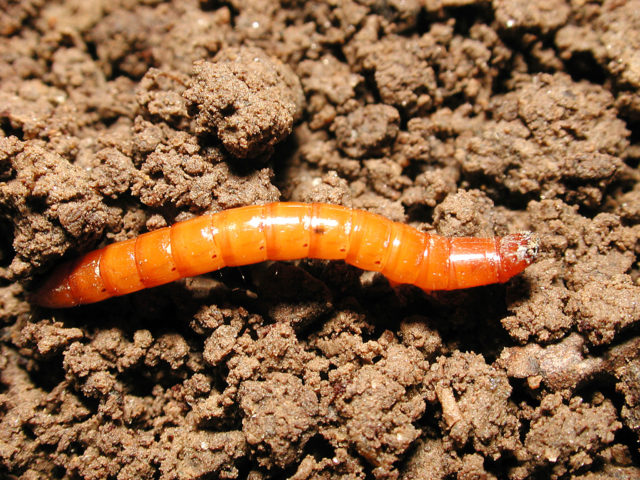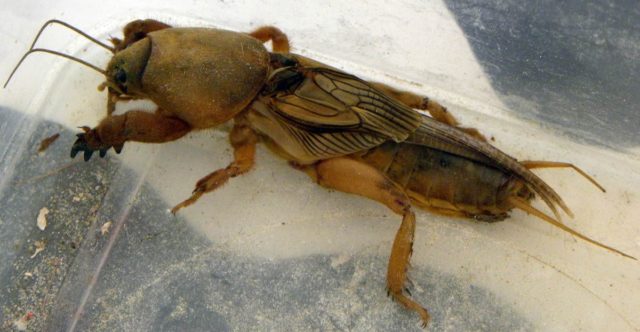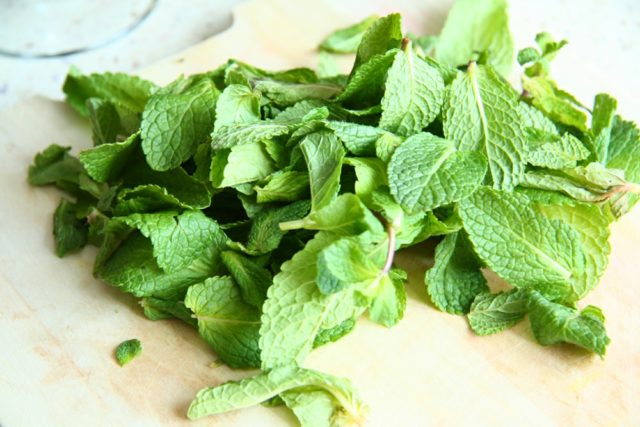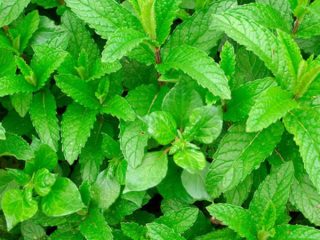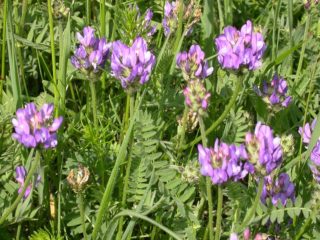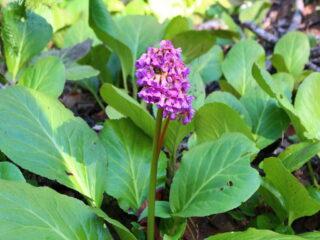Content
All mint varieties contain a significant amount of aromatic substances. Among them there are also real record holders. One of them is menthol mint, which, as the name implies, has a higher menthol content.
Description of menthol mint
Menthol mint is considered a subspecies of peppermint, a widespread plant cultivated for industrial purposes. Its main characteristics:
Parameter | Value |
Plant type | Perennial herbaceous |
Root | Creeping, shallow, with a small lobe |
Stem | Straight, light green, turns reddish with age, tetrahedral. Hollow inside. In good conditions it grows up to 1 m, in nature the average height of a bush is 0.25-0.5 m |
Leaves | Green, ovate-elongated, pointed, with a jagged jagged edge. The upper leaves are sessile, the lower ones grow on a short petiole. The location is opposite |
Flowers | Small, light purple, grow in spike-shaped inflorescences |
Flowering period | July August |
Fruit | Nut-like coenobia, ripen in August-September |
In the photo below - menthol mint:
What is the flavor of menthol mint
A distinctive feature of menthol mint is the increased content of aromatic ether compounds in it, primarily menthol. This gives it a strong and lasting fresh scent.
What is the difference between menthol and mint
Unlike mint, which is a plant, menthol is a crystalline organic compound that is obtained from the leaves of plants in the Lamb family. This substance is widely used in cosmetology and pharmacology, as well as in the food industry.
The menthol obtained from the mint extract has a local anesthetic effect; upon contact with the skin and mucous membranes, its action manifests itself through irritation of the cold receptors. This explains the characteristic refreshing effect of this substance.
A video on this topic can be viewed at the link:
Why menthol mint is good for you
The aromatic substances in menthol mint have a positive effect on many functions of the body. They have a beneficial effect on the digestive tract and the nervous system, facilitate the course of colds. I also use menthol mint infusions and decoctions externally as an antiseptic and cleanser.
Using menthol mint
Menthol mint has many beneficial properties, but it also has contraindications. It is used in cooking, cosmetology and medicine, as well as in the manufacture of pharmaceuticals.
In folk medicine
In folk medicine, mint has always been used as a sedative. Her broth was taken for nervous disorders, increased excitability, and also as a sleeping pill. The extract from it is a good choleretic agent, it normalizes the work of the gastrointestinal tract. Peppermint lowers blood pressure and also has a mild pain relieving effect.Inhalation with a decoction or tincture of this plant can be done to soften coughs, relieve throat irritation in case of colds. The use of a decoction of mint is useful for women to reduce menstrual pain, as well as with menopause.
In cosmetology and perfumery
A decoction of menthol mint is widely used in cosmetology. It has antiseptic properties and can be used to treat small wounds, it is used to wipe the face for cleaning, as well as for therapy and prevention of rashes. It is good to use it for rinsing the mouth, it is not only refreshing, but also an excellent prevention of gum disease. Mint broth perfectly strengthens the hair, improves its structure, and at the same time reduces the itching of the scalp.
There are quite a few perfumery products that contain menthol, an extract from mint leaves. These are various lotions, ointments, creams. Menthol is widely used for the manufacture of toothpaste, mouth rinses.
In pharmacology
There are a lot of medicines containing menthol. These are various herbal tinctures with a soothing and vasodilating effect, drops, mixtures for inhalation, as well as local anesthetics. The most famous pharmacological preparations obtained from menthol mint are: Boromenthol, Valocormid, Zelenin Drops, Menovazin, Pectusin, Strepsils, Faringopils, Evamenol.
In cooking
Menthol-flavored mint is widely used in cooking. In one form or another, it is found in many dishes, as an ingredient or in spices, it is found in recipes in many cuisines of the world. Green leaves are used to decorate and serve dishes, as a component of salads, to prepare sauces for meat and fish, and they are also included in alcoholic beverages and cocktails.
Mint mint is used for canning vegetable snacks, fruits and berries, for preparing compotes and soft drinks, and the most popular direction of its cultivation is the addition of leaves to tea during brewing.
Limitations and contraindications
In addition to medicinal properties, menthol mint has contraindications for use. For example, it is not recommended to use it for people whose work is associated with increased attention. In addition, peppermint may have a negative effect on male libido by decreasing sex drive. It should not be used by people with low blood pressure, as well as those who have allergic reactions to menthol or other substances contained in this plant.
Contraindication to the use of menthol mint is varicose veins. Women suffering from infertility or having difficulty conceiving should also refuse any dishes containing the components of this plant.
How menthol mint multiplies
There are many ways to propagate menthol mint for planting in a personal plot. Here are the main ones.
- Seminal. The most optimal planting method if this crop is planted on the site for the first time. Menthol mint seeds can be purchased at gardening stores or online. It is best to plant it in seedlings. For this, menthol mint seeds are germinated at home, and then, after the onset of suitable weather conditions, the grown plants are planted in a permanent place.
- Cuttings. This method of reproduction can be used if there are already mint bushes on the site. For grafting, you need to cut off the top of the plant 10-15 cm long and put it in water.After about 2 weeks, the cutting will begin to form its own root system at the cut site. When the roots reach 2-3 cm in length, young seedlings can be planted in open ground or in a pot.
- Root layers. The superficial mint roots resemble long lashes. A large number of dormant buds are located on them. For reproduction, a part of the root 10-12 cm long is cut off and planted in moist fertile soil.
- Air layering. To obtain them, the lateral shoot of the mint bush is bent to the ground and sprinkled with soil. Quite quickly, the internodes will begin to form their own root system, and a chain of sprouts will appear along the entire length of the buried shoot. In the future, they need to be cut off from the mother bush and planted in a permanent place.
- Division of the bush. The plant can be dug out of the ground and cut into several parts, so that each has a sufficient number of roots and a stem with buds. In this way, you can divide an adult mint bush into several small ones and plant them over the site.
Landing rules
An open sunny area with loose, fertile soil is best suited for growing menthol mint. If there are not enough nutrients, additional nitrogen and phosphorus fertilizers, as well as humus, need to be added. Seedlings are planted in open ground in May, when the ground warms up and the night temperature stops dropping below + 5 ° C. Menthol mint is planted in rows, observing the distance between neighboring plants of 25-30 cm.
Features of growing menthol mint
After planting, young plants are watered regularly. After the seedlings are well rooted and the development of greenery begins, the frequency and volume of watering must be reduced. Menthol mint loves breathable soil, therefore, after watering, the top layer of the soil must be carefully loosened, providing air access to the surface roots of the bush. Weeds need to be removed in a timely manner so that mint crops do not compete with them for light and nutrients.
Top dressing of menthol mint should be done very carefully. An excess of nitrogen, as well as an excessive amount of fresh organic matter (manure or chicken droppings), have a beneficial effect on the growth of green mass, however, the concentration of menthol in the leaves also increases, which negatively affects their taste. They just get bitter. In addition, the increased nitrogen content in the soil is a risk factor for the appearance of such a dangerous fungal disease as rust.
For the winter, menthol mint bushes are left in the ground. This perennial plant has good winter hardiness and freezes out quite rarely, except in the most severe frosts. In autumn, the bushes must be cut off, leaving small stumps 5-7 cm high, and then covered with fallen leaves or dry grass, and with the onset of winter, additionally covered with a layer of snow.
Another feature of menthol mint cultivation is its proliferation. If you do not take any measures to limit its distribution, creeping plant roots will capture more and more new territories. For this reason, over time, mint can turn into a vicious weed. To artificially limit the growth of the root system, a fence is driven in to a depth of 0.2-0.25 m from metal sheets or slate around the mint beds. This problem can be avoided by planting mint in special pots or containers, dug in at the same level with the beds.
Pests and diseases
In unfavorable weather conditions or in case of disturbances in care, menthol mint can be susceptible to various diseases, mainly fungal. These include the following:
- Rust
- Anthractosis
- Septoriasis
- Powdery mildew
- Verticillosis
Diseased mint bushes must be identified and destroyed in a timely manner. It makes no sense to spray the rest of the plantings with various preparations, otherwise it will be unsafe to eat them.
Prevention of the appearance of fungal diseases of menthol mint is high-quality weeding, timely disposal of plant waste, deep autumn plowing before planting.
Pests can also appear on menthol mint, despite the fact that its greens contain a large amount of aromatic compounds and have a specific taste. The following insect pests are dangerous for this plant:
- Weevil
- Mint flea
- Mint mite
- Aphid
- Wireworm.
- Medvedka
Pest control is carried out in various ways, from shaking off plants and manually collecting insects to treating plantings with various means. The use of chemicals for menthol mint in this case is not always justified, therefore, various folk remedies are often used for spraying, for example, infusion of celandine.
When and how to harvest menthol mint
The best time to harvest menthol mint leaves is mid-July. It is during this period that its flowering begins. The concentration of essential oils in plant greenery reaches its maximum. You cannot start harvesting early in the morning, the bushes must have time to dry out from the dew. Collect menthol mint as separate leaves and twigs, tying them into bunches.
How to dry menthol mint properly
Dried menthol mint in open areas or in rooms with good air exchange: in attics, terraces, in gazebos or under a canopy. At the same time, direct sunlight should not fall on the greens. Bunches of menthol mint are usually dried in a suspended state, and the leaves are laid out in a thin layer on clean paper or cardboard, covering the top with gauze from insects.
Dried herbs become brittle and rusty to the touch. It is crushed and stored in glass or ceramic jars with tight-fitting lids. In this form, menthol mint can be stored for up to six months.
Another way to store fresh mint is to deep-freeze it. In this case, the fresh leaves are washed, dried and placed, without tamping, in a small, tightly closed container. Then containers with leaves are placed in a freezer and stored at a temperature of -18 ° C. In this form, they can remain without loss of properties up to 7-9 months.
Conclusion
Menthol mint is a fairly simple cultivated plant that does not require special care. It has many useful properties and can be used both for culinary and hygienic or medical purposes. Nevertheless, do not forget that over time the plant can grow strongly and literally fill the entire area.
